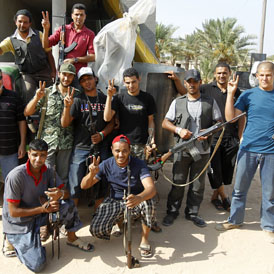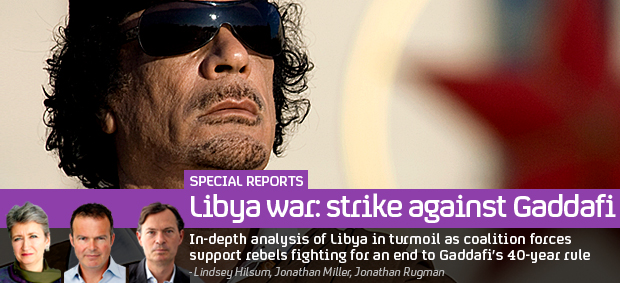Libya rebels move to within 45 miles of Tripoli
As two offensives place Libyan rebel forces within striking distance of Gaddafi’s Tripoli stronghold, Anthony Tucker-Jones asks if they can maintain their new-found momentum.

After five months of deadlock, it seems as if the uprising in Libya is finally making headway. Latest reports indicate that the rebels are now within 45 miles of the Libyan capital.
Whether this is due to an improvement in rebel military capabilities (in part thanks to French weapons supplies) or falling morale among Gaddafi’s supporters remains unclear.
In the last few days the rebels have made potentially significant inroads both to the south and east of Tripoli.
Most notable is the capture of the village of al-Qawalish, 60 miles south west of Tripoli, following a battle reportedly lasting six hours.
This was partly facilitated by Nato airstrikes which destroyed a number of loyalist armoured vehicles in the area. The opposition states that it waited until Nato green-lighted their ground assault.
When rebel forces rolled in to al-Qawalish yesterday there was every indication that the defenders had conducted a disorderly withdrawal, leaving much of their kit behind.
Previous rebel advances have had a nasty habit of grinding to a halt and then being put to flight following loyalist counter-attacks.
The significance of this is that it places opposition forces within striking distance of Garyan, which dominates the main highway to Tripoli. Some of the rebel fighters are known to hail from Garyan – so they have good intelligence on this strategic garrison town.
Nato airstrikes also hit tanks and military vehicles near Garyan prior to the attack on Qawalish.
After initially gathering their strength in the Nafusa mountains near the Tunisian border, the rebels attacked south east towards Qawalish from their strongholds at Kikla and Qala.
Gaddafi‘s forces in Qawalish had been harassing rebel positions for weeks. In particular the rebels’ intention was to put an end to the artillery and rocket attacks on opposition-controlled territory in the region. Previous attempts by volunteer fighters to dislodge Gaddafi’s troops had failed.
As well as the usual assortment of “technicals” (Toyota pick-ups mounting various weapons), for the Qawalish attack the rebels also fielded armour that included T-54 tanks, BMP mechanised infantry combat vehicles and ZSU-23-4 Shilka self-propelled anti-aircraft guns (the latter can lay down devastating fire on ground targets).
This perhaps indicated an improved level of organisation and showed that some thought had gone into the attacking force’s composition.

Push from Misrata
In the meantime, to the north, the rebels have also pushed west from the city of Misrata and are now at least four miles from their start line at Dafniya, putting them in control of the Na’imah area.
These advances have not been without losses, with rebel commanders reporting that they have been suffering casualties at the hands of Gaddafi’s artillery.
As the rebels’ last major gain occurred last month when they drove 12 miles north from the western mountains to Bir al-Ghanam, the advances at Qawalish and Misrata are encouraging for the rebel leadership.
However, it is doubtful that they have the ability unaided to overcome Gaddafi’s forces in the Tripoli area.
Previous rebel advances have had a nasty habit of grinding to a halt and then being put to flight following loyalist counter-attacks.
The worry is that Gaddafi’s supporters have the resources to launch an effective counter blow. Alternatively the Transitional National Council in Benghazi may decide to call a halt for fear of creating panic or bloodshed in Tripoli. They may feel their current gains are enough to tilt Gaddafi’s regime into imploding.
Certainly there are conflicting reports that Colonel Gaddafi is now prepared to step down. Ultimately only this will stop the blood-letting.
Anthony Tucker-Jones is a correspondent for intersec – The Journal of International Security and defencemamangement.com
